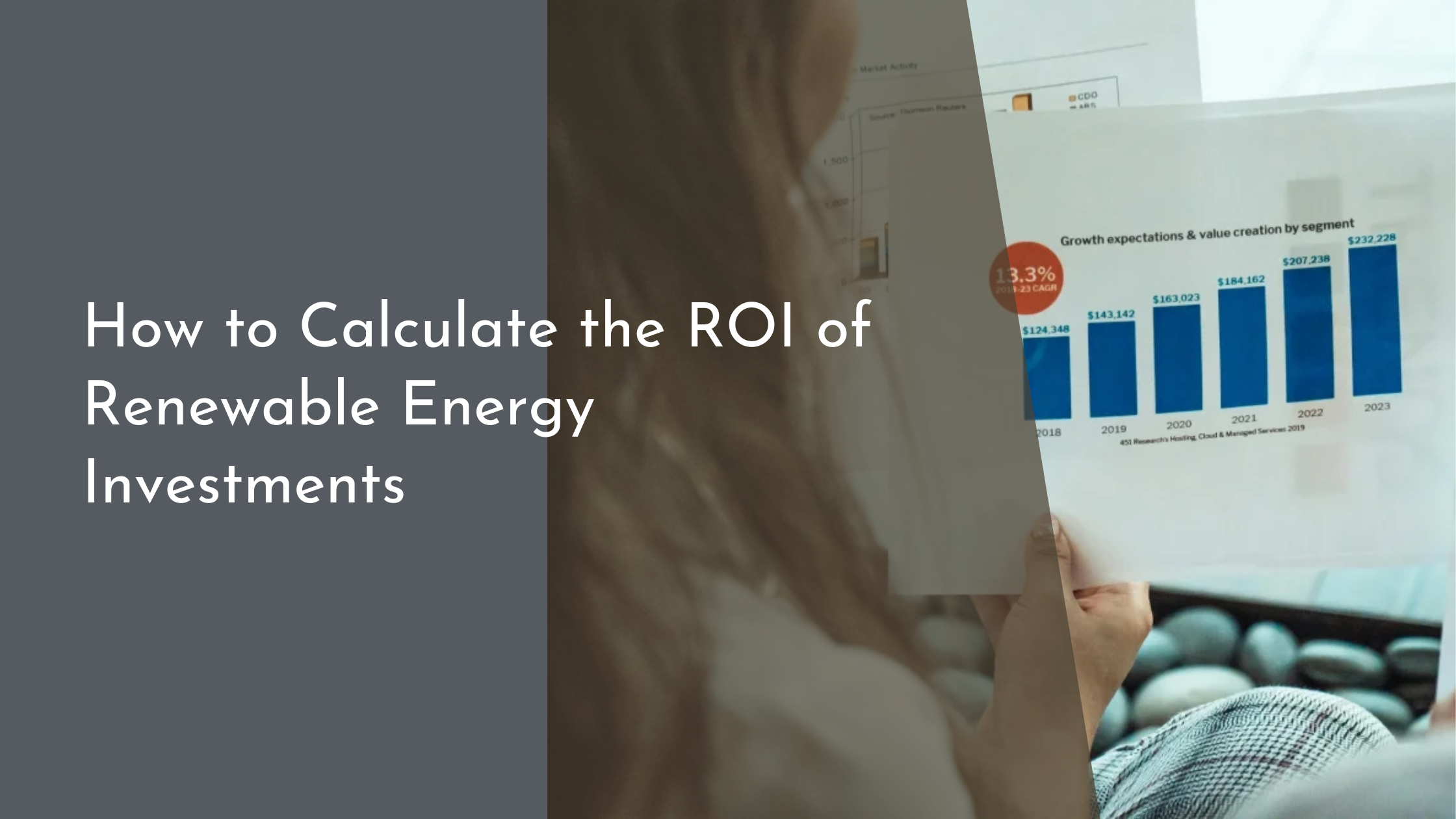How to Calculate the ROI of Renewable Energy Investments
Renewable energy investments have gained significant traction in recent years as both individuals and businesses seek sustainable solutions to meet their energy needs. While the environmental benefits of such investments are clear, the financial implications are equally important. Understanding the return on investment (ROI) in renewable energy is essential for making informed decisions. This article will guide you through the process of calculating the ROI of renewable energy investments by covering key aspects such as costs, financial benefits, and sustainability.
Understanding ROI in Renewable Energy
Return on Investment (ROI) is a critical metric that helps investors evaluate the potential financial returns of a renewable energy project. In the context of renewable energy, ROI is typically expressed as a percentage that indicates the profitability of the investment relative to its cost. It involves comparing the financial gains derived from the investment to the initial expenses incurred. A positive ROI signifies that the investment is generating more income than the cost, making it worthwhile. Conversely, a negative ROI suggests that the investment is not yielding desirable returns.
The calculation of ROI in renewable energy is unique due to the long-term nature of such projects. Unlike traditional investments that may yield returns in the short term, renewable energy investments often require patience, as the payback period can extend over several years. This long-term perspective necessitates a comprehensive understanding of all factors influencing ROI, from installation costs to ongoing maintenance and energy savings. An informed investor will not only look at immediate financial returns but will also consider the broader implications of their investment, such as environmental impact and energy independence.
Identifying Costs and Initial Investments
The first step in calculating ROI for renewable energy is identifying the initial costs and investments involved. These can vary significantly depending on the type of renewable energy system being implemented, such as solar panels, wind turbines, or geothermal systems. Initial costs typically include the purchase of equipment, installation fees, and any necessary upgrades to existing infrastructure. Additionally, investors should factor in soft costs like permitting, inspections, and potential legal fees associated with the project.
Beyond installation, ongoing maintenance and operational costs must be considered to get an accurate picture of the total investment. Predicting these expenses can be challenging, as they depend on factors such as location, weather conditions, and technological advancements. For instance, solar panels may require regular cleaning and occasional servicing to maintain efficiency, whereas wind turbines might need more frequent checks due to mechanical wear and tear. Understanding these costs is crucial for investors to estimate the long-term financial requirements of their renewable energy projects.
Calculating Returns and Financial Benefits
Once the costs have been identified, the next step is to calculate the expected returns and financial benefits from the renewable energy investment. The primary source of returns is the energy savings achieved by offsetting utility costs. For example, a solar panel system can significantly reduce electricity bills by harnessing sunlight to generate power. To quantify these savings, investors should analyze historical energy usage and compare it to the projected output of the renewable system.
In addition to direct energy savings, renewable energy investments can offer other financial benefits such as tax incentives, rebates, and renewable energy credits. Governments around the world promote clean energy adoption by providing various incentives to offset the initial costs. Investors should thoroughly research available programs in their region to maximize potential returns. By taking advantage of these financial benefits, the overall ROI can be improved, enhancing the attractiveness of the investment.
Evaluating Long-Term Sustainability and Impact
Evaluating the long-term sustainability and impact of a renewable energy investment is an essential aspect of calculating its ROI. Beyond immediate financial returns, investors should consider how their investment contributes to broader goals such as reducing carbon emissions and promoting environmental conservation. By investing in renewable energy, individuals and businesses can significantly decrease their reliance on fossil fuels, contributing to a cleaner, healthier planet.
Moreover, renewable energy investments can enhance energy independence and security. As global energy demands continue to rise, reliance on traditional energy sources can lead to volatility in energy prices and supply disruptions. Renewable energy investments, on the other hand, provide a stable and predictable source of energy, insulating investors from such uncertainties. These long-term benefits, while not directly reflected in financial figures, add to the overall value and attractiveness of renewable energy projects.
Calculating the ROI of renewable energy investments involves a careful analysis of costs, returns, and broader impacts. By understanding the initial expenses, potential savings, and long-term benefits of these investments, investors can make informed decisions that align with their financial goals and environmental values. As technology advances and energy policies evolve, the prospects for renewable energy investments will continue to improve, offering promising opportunities for individuals and businesses alike. Embracing renewable energy not only contributes to a sustainable future but also paves the way for financial prosperity.

